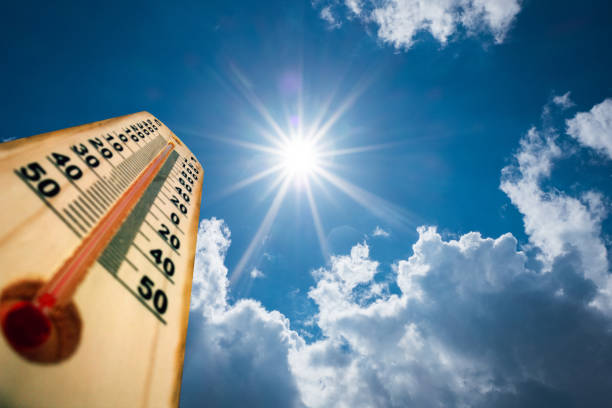Climate change is one of the most pressing issues facing the planet today. It refers to long-term shifts in temperatures and weather patterns, primarily due to human activities such as burning fossil fuels, deforestation, and industrial processes. This article explores the causes, impacts, and potential solutions to climate change, emphasizing the urgent need for collective action.

Causes of Climate Change
- Greenhouse Gas Emissions:
- Carbon Dioxide (CO2): The burning of fossil fuels like coal, oil, and natural gas for energy and transportation is the largest source of CO2 emissions. These activities release large amounts of CO2, a major greenhouse gas that traps heat in the atmosphere.
- Methane (CH4): Methane is released from agricultural practices, particularly livestock farming, and from landfills and natural gas production. Although present in smaller quantities than CO2, methane is significantly more effective at trapping heat.
- Deforestation:
- Forest Loss: Trees absorb CO2 and release oxygen, playing a crucial role in regulating the climate. Deforestation for agriculture, logging, and urban development reduces the number of trees available to absorb CO2, increasing the amount of this gas in the atmosphere.
- Biodiversity Impact: The loss of forests also affects biodiversity and the ability of ecosystems to adapt to climate change, further exacerbating the problem.
- Industrial Processes:
- Chemical Production: Industrial activities, including cement production, chemical manufacturing, and metal smelting, release a variety of greenhouse gases and pollutants into the atmosphere.
- Waste Management: Inadequate waste management practices, such as open burning of waste and inefficient recycling processes, contribute to greenhouse gas emissions.
Impacts of Climate Change
- Rising Temperatures:
- Global Warming: Average global temperatures have risen significantly over the past century. This warming trend leads to more frequent and severe heatwaves, impacting human health, agriculture, and natural ecosystems.
- Polar Ice Melt: Rising temperatures cause polar ice caps and glaciers to melt, contributing to sea level rise and altering global weather patterns.

- Extreme Weather Events:
- Storms and Hurricanes: Climate change increases the intensity and frequency of extreme weather events, such as hurricanes, typhoons, and severe storms. These events cause widespread damage to infrastructure, ecosystems, and human communities.
- Droughts and Floods: Changes in precipitation patterns lead to prolonged droughts in some regions and increased flooding in others, disrupting agriculture, water supplies, and livelihoods.
- Ecosystem Disruption:
- Habitat Loss: Many plant and animal species are unable to adapt quickly enough to changing temperatures and weather patterns, leading to habitat loss and increased risk of extinction.
- Ocean Acidification: The absorption of excess CO2 by the oceans causes acidification, which harms marine life, particularly coral reefs and shellfish.
- Economic and Social Impacts:
- Agricultural Productivity: Climate change affects crop yields and livestock productivity, threatening food security and livelihoods, especially in vulnerable regions.
- Health Risks: Increased temperatures and extreme weather events exacerbate health problems, including heat-related illnesses, respiratory issues, and the spread of vector-borne diseases like malaria and dengue fever.
Solutions to Climate Change
- Reducing Greenhouse Gas Emissions:
- Renewable Energy: Transitioning from fossil fuels to renewable energy sources, such as solar, wind, and hydroelectric power, is essential for reducing greenhouse gas emissions. Investment in renewable energy infrastructure and technology is crucial.
- Energy Efficiency: Improving energy efficiency in buildings, transportation, and industrial processes can significantly reduce emissions. Simple measures, such as better insulation, energy-efficient appliances, and public transportation, can have a substantial impact.
- Reforestation and Conservation:
- Afforestation and Reforestation: Planting trees and restoring degraded forests can help absorb CO2 from the atmosphere, mitigating climate change and restoring ecosystems.
- Protected Areas: Establishing and maintaining protected areas for forests and other critical ecosystems helps preserve biodiversity and enhance the resilience of these areas to climate change.

- Sustainable Agriculture:
- Regenerative Farming: Adopting sustainable farming practices, such as crop rotation, agroforestry, and organic farming, can improve soil health, increase carbon sequestration, and reduce emissions from agriculture.
- Livestock Management: Implementing better livestock management practices, including improved feed and manure management, can reduce methane emissions from agriculture.
- Policy and Legislation:
- International Agreements: Global cooperation and adherence to international agreements, such as the Paris Agreement, are essential for coordinated efforts to combat climate change. Countries must commit to ambitious targets for reducing emissions and transitioning to sustainable practices.
- National Policies: Governments need to implement and enforce policies that promote renewable energy, energy efficiency, and conservation efforts. This includes subsidies for clean energy, carbon pricing, and regulations on emissions.
- Public Awareness and Education:
- Climate Education: Educating the public about the causes and impacts of climate change, as well as the importance of sustainable practices, is crucial for fostering a culture of environmental stewardship.
- Community Engagement: Engaging communities in climate action initiatives, such as local conservation projects and sustainable living practices, can drive grassroots efforts to combat climate change.
Conclusion
Climate change is a complex and multifaceted challenge that requires urgent and sustained action from individuals, communities, governments, and businesses. By understanding the causes and impacts of climate change, and implementing comprehensive solutions, we can mitigate its effects and build a more sustainable and resilient future. Collective action, informed by science and driven by a commitment to environmental stewardship, is essential for addressing this global crisis and ensuring a livable planet for future generations.

